Why Should You TrusT Me?
My journey into forensic nutrition, gastrointestinal disorders, and longevity research started with a disaster. Shortly before turning 42 in 1996, my life and career started to unravel from complications of undiagnosed late-stage type 2 diabetes.
I also became obese, couldn’t type or drive because of debilitating carpal tunnel syndrome, could barely walk a block because of knee pain from osteoarthritis, and couldn’t do my job because my thinking and behavior were compromised by insomnia, chronic fatigue, irritability, and depression.
By all accounts, someone in that shape should have been dead a long time ago. But that is not what happened. Instead of going to the doctors for conventional treatment with drugs and insulin, I hit medical textbooks, and here is what happened next:
Diabetes. I have been diabetes-free since 1999. For most people, a similar recovery was as likely to happen back then or even now as winning a lottery. I accomplished all that organically without taking drugs or injecting insulin.
Obesity. Depending on the season, my weight is 6 to 8 lb (3 to 4 kg) more than in my youth. I consider it normal and desirable for my age because, in case of a serious accident or disease, such as COVID, lean individuals are the first to die.
Carpal tunnel syndrome. I’ve been typing books, articles, social posts, and countless emails for the past 25 years, and this devastating disorder never returned. I didn't do anything specific to treat this condition. It magically disappeared on its own, along with diabetes and all other complications.
Osteoarthritis. I routinely fast-walk a few miles daily, either outside or on a treadmill inside, and my knees and hips are still perfectly fine. It's nice to know that no knee or hip replacements are in store for me.
Insomnia. Writing books and running a business without good sleep is nearly impossible because these jobs require gobs of energy, focus, and concentration. It didn't come without sacrifices, though. I had to give up on coffee, wine, beer, and occasional desserts.
Chronic fatigue. Normalizing blood sugar and restoring sleep had a magical effect on my energy levels. My work day starts at around 7 am and ends around 11 pm. I take a dinner break from 4 pm to 6 pm and brief naps once or twice daily up to 20 minutes each.
Irritability. Diabetes and irritability go hand-in-hand because unstable levels of insulin and blood sugar compromise mood, motivation, and cognitive functions. The ensuing behavior is a certain career breaker because nobody wants to be around an erratic jerk.
Depression. I experience bad moods from time to time, but nothing like the overwhelming sadness and hopelessness that used to define my state of mind in the mid-nineties. It's all vanished along with diabetes.
I mentioned “hitting” medical textbooks for a reason: my natural recovery methods were 100% based on basic principles of human physiology, medical biochemistry, and nutrition that I first learned while studying pharmacy at medical university. I didn't use a single alternative treatment because none exists.
The human body is programmed by evolution to stay healthy, and it isn't evolution's fault when it gets sick. Once the causes of sickness are removed, the body returns to its natural healthy state. And that's exactly how I recovered from type 2 diabetes — once I removed its causes, my body gradually returned to “healthy" and stayed that way.
The good news is — if I could do it, so can you or anyone else because our genetic differences are less than 0.1%. The bad news — the treatment of diabetes has become a $400 billion-plus enterprise and it isn't likely to give up its profits anytime soon.
Almost thirty years later (1996 - 2025), my state of health and aging-related markers are equally astonishing for a man of my age:
Chronic disorders. I don’t have a single condition common for my age group. The top five are hypertension, osteoarthritis, diabetes, heart disease, and chronic respiratory disorders, such as bronchitis and obstructive pulmonary disease (COPD).
Bone disease. By age 70, most people experience height loss ranging from 0.5 to 2 inches (1.25 to 5 centimeters) due to spinal compression caused by degenerative bone disease. My current height is still the same as it was at 25, which means I am free of osteoporosis, osteomalacia, and osteoarthritis.
Muscle mass. Healthy muscles are required to support healthy bones and joints. The rate of muscle loss ranges from 1% to 2% per year past the age of 50, leading to about 25% for people under 70. Even though walking is my only exercise, my muscles remain intact.
Dental health. Of my original 32 teeth, I still have 30. One was extracted due to crowding in my youth, and another was accidentally broken by a dentist and replaced with an implant in 2016. According to cited statistics, less than 21% of adults retain all their teeth by age 70.
Hearing. My hearing, including high-pitched sounds, is still the same as in my twenties and thirties. Up to two-thirds of individuals aged 70 and older experience some degree of hearing loss, and it becomes more severe in later years.
Eyesight. I’ve been wearing eyeglasses to correct severe farsightedness and astigmatism since kindergarten. Approximately half of people my age have cataracts, which rises to around 70% or more for those over 75. Has never been an issue for me.
Genitourinary disorders. By my age, up to 70% of men experience enlarged prostate and erectile dysfunction. Neither condition has affected me, and I still sleep 6 to 7 hours without waking up most nights.
-
Mental health. Up to 40% of people of my generation experience cognitive decline. My mind is fully intact, and I expect it to remain the same for the rest of my life.
-
Memory. I’m mildly dyslexic and never had the kind of memory, recall, or puzzle-solving ability prized by most employers. These “defects” were a source of considerable anxiety, insecurity, and impostor syndrome well into my fifties and one of the reasons I’ve been self-employed for most of my life — I simply couldn’t pass challenging interviews with the way my mind works. My memory remains intact.
Medication. I don’t take a single prescription or over-the-counter drug. On average, Americans of my age take from 2 to 7 prescription medications daily. Most of these drugs come with a list of side effects longer than this page. To imagine what this number of drugs may do to anyone my age, take a look at someone you know taking them.
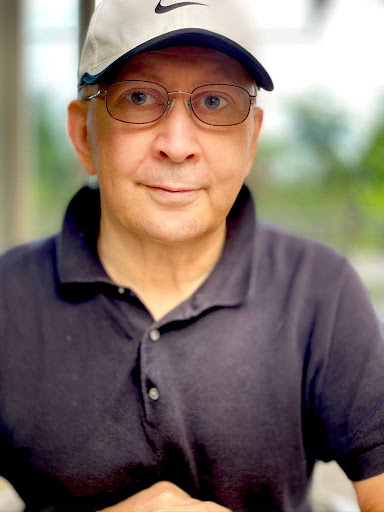
My wife took this candid, unretouched photo with her smartphone on Aug 23, 2023, two months before my 69th birthday.
It's worth noting that I attained all of the above results without resorting to hormone replacements, the transfusions of young blood, stem cells, cryotherapy, hyperbaric chambers, IV drips, punishing diets, longevity retreats, fillers, botox, thread lifts, plastic surgeries, concierge doctors, private trainers, and many other over-the-top treatments accessible mostly to the ultra-rich.
I recently had an unfortunate 'opportunity' to stress-test my heart, brain, and bones in a freak accident. Despite my bookish appearance and background, I’ve been doing carpentry, plumbing, HVAC, and electrical repairs around the house since my early teens. On November 8, 2024, while fixing the second-floor soffit torn apart by a gang of raccoons, I fell off a 6-foot step ladder onto a concrete sidewalk.
My waist was level with the height of the soffit, or approximately 10 feet (3 meters). I passed out for about a minute and, to my wife’s sheer terror, got up, picked up my eyeglasses from the ground, brushed off the dirt, and walked away with just a few bruises and scratches.
Imagine a typical man my age (or any age) walking away from a similar fall unhurt and back to work the next day. I sure got scared like hell, but that’s another story.
If this sounds made up, it feels just as improbable to me as to anyone else. The only explanation I have is that the fall somehow felt controlled. I didn’t land on my back, head, face, or hands, but on my side. It probably happened because I spent my youth playing hockey, trained for two years in a competitive boxing school, rode a bike in city traffic well into my thirties, and skied (not very well) on black diamond slopes. All of these experiences came with plenty of hard falls. I’m guessing my body unconsciously pulled itself together, and the rest was healthy bones, a strong heart, and a lot of luck.
Still, however unusual or impressive some of the above accomplishments may seem, more is needed to earn your trust. Here is what else I have done with my life after getting my health back.
Following my recovery, I researched and wrote four books between 1999 and 2014. Three were published in print, and the fourth I have turned into this website.
I also developed a drug-free method for managing chronic constipation that is free of side effects, beneficial to the body, and safe for extended use. Over the past 25 years of continuous use, its efficacy has been proven by tens of thousands of satisfied customers and positively analyzed by an independent researcher [link].
I continue working full-time, pain-free, full of energy, forward-looking, perennially optimistic, and for the past twenty-five years, have been able to put in 60 to 70 hours worth of hard work each week alongside my colleagues in their early twenties and thirties.
And in my case, no burnouts. No nervous breakdowns. No depression. No anxieties. No ulcers. No hypertension. No chronic fatigue. And no carpal tunnel syndrome or bad back from near-constant typing.
Please note that my state of health described above reflects personal choices informed by medical education and nearly three decades of research into human physiology, nutrition, and gastrointestinal disorders. You may not be able to achieve similar results on your own without a similar background.
It's also important to understand that the conditions I've been able to overcome were lifestyle-related (functional) and addressed before they became irreversible (organic).
Can you accomplish similar improvements?
It depends on your age and state of health. If, for example, you are in your thirties or forties, still healthy, and would like to attain similar or better results, please read on because my experience is repeatable.
If you are already in your early fifties or sixties, your health and energy may have started to decline, and you would like to stop and reverse it, then reading this page to the end and acting on it may change your life as it did mine.
If you are already knee-deep into an irreversible health decline and taking multiple prescription medications, it may be too late to manage this process on your own. Sorry, I can't help you personally because I am not a physician licensed to diagnose underlying conditions and de-prescribe medicines.
If you begin following my recommendations while still in decent shape, you should and could attain the quality of life, performance, and appearance of someone in their forties or fifties well into your sixties and seventies.
If those approaches had worked so well for me and my family, there are no reasons why they wouldn’t work equally well for you and your family. They are also safer, simpler, more attainable, cost next to nothing, and are based on following these three rules:
Eat a moderate, balanced diet, as described in the last two chapters of Fiber Menace [link]. This diet is similar to Keto or Intermittent fasting but without extremes and side effects. I’ve been on this diet since 1996, and it is key to reversing and preventing most of the disorders I mentioned above.
-
Take professional-grade supplements to compensate for the age-related reduction of nutrient assimilation and inherent nutrient deficiencies of calorie-restricted diets. Professional-grade supplements are essential for supporting your body in renewing itself, a physiological process known as structural metabolism [link].
The most critical among them are a daily multivitamin with coenzymated B-group vitamins, a coenzymated form of sublingual B-12, extra vitamin C bound to calcium and magnesium, and liquid cod liver oil.
This article from The Proceedings of the National Academy of Sciences, titled Prolonging Healthy Aging: Longevity Vitamins and Protein, makes a central argument that aligns with mine: “Most of the world's population—even in developed countries—consume many of the vitamins and minerals at levels below those recommended.”
Follow the previous two rules to remain healthy, so you can stay clear of prescription drugs whose insidious side effects will gradually undermine your sleep, energy, stamina, memory, cognition, mood, and appearance.
These three simple rules have saved my life, family, and career. My current state of health proves that an ounce of prevention at the right time is more valuable than a pound of cure when you are already sick! Making similar changes will have a similarly profound impact on your future, too!
While my outcomes are factual, my recommendations on this website or in my books aren't a substitute for medical care in the presence of pre-existing clinical conditions. If you’ve been already diagnosed with any of the conditions mentioned above, do not make any changes to your treatment without first consulting with your doctor(s).
Another point worth mentioning is that my outcomes reflect a relatively normal childhood, good education, a stable home environment, a strong family, and freedom from traditional employment (i.e., being self-employed). While this approach worked for me, your results may vary based on your genetics, life circumstances, and degree of adherence to recommended changes.
It doesn’t mean my youth or adult life were picture-perfect. I was raised by a single mother. I dealt with plenty of bullying from teachers because I was headstrong and unyielding and from street thugs because I was younger and weaker. Immigrating to the United States at 24 wasn’t exactly a piece of cake, and my efforts to break into the corporate world didn’t go far because I was naive, idealistic, hard-working, and easy prey for more seasoned opportunists. But, somehow, all of it made me tougher, more self-reliant, and, in the end, healthier at my age than anyone I’ve met along the way.
Why having good luck and good genes isn't enough?
To realize how dramatically premature aging affects people in the United States, check out the photos of the Brown sisters below. They (from the left) — Heather (23), Mimi (15), Bebe (25), and Laurie (21) — were photographed each year between 1975 and 2014 by the husband of Bebe, a renowned American photographer Nicholas Nixon:
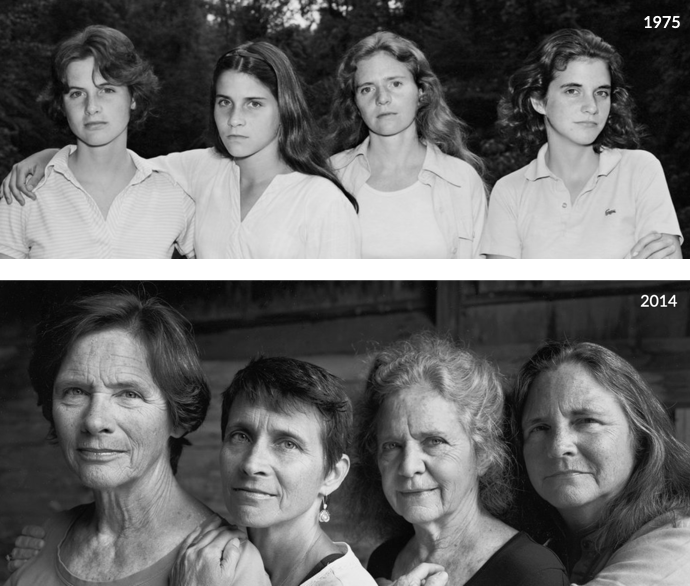
The Extraordinary Portraits of the Brown Sisters by Google Arts and Culture. Images shown under fair use for educational commentary.
Copyright © Nicholas Nixon [link].
Looking at these photos, it's truly striking how these four attractive American women from apparently a well-to-do background had aged beyond recognition, as if their lives were spent in profound Dickensian poverty and hard labor.
Even though my books and website have impacted tens of thousands of lives in many profound ways, when it comes to aging, I can only speak for myself and the people close to me. Here is how my work impacted my immediate and extended family:
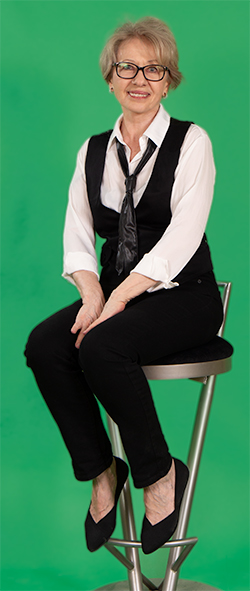
My wife. We are only four months apart. I was born in October 1954, and Tatyana was born in January 1955, so she and Laurie Brown (first from the right in the photo above) are the same age. I took her photo on the left on November 3, 2024, three months before her 70th birthday.
Tatyana adopted a functional nutrition lifestyle and started taking supplements along with me in 1996. It wasn't so much out of solidarity but to combat kidney stones, which, incidentally, never came back.
According to conventional medical advice, once you get kidney stones, just like diamonds, they are forever. I learned from my clients who followed the 'protocol' similar to Tatyana's that it isn't so.
Tatyana hasn't had any plastic surgeries or cosmetic procedures. Her primary forms of exercise are walking and household chores. She eats a similar diet and doesn't mind an occasional bottle of beer or a glass of wine with dinner.
You can further compare the results of her aging with the Brown sisters by perusing our family's candid and studio photos from 2012 until the present on my Facebook page [link]. It's nowhere as dramatic as the Brown sisters'.
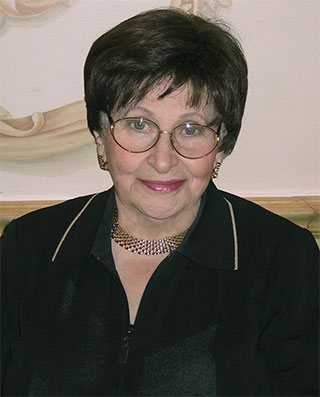
Celebrating my mother's 82 birthday on November 4th, 2002. After ten chemotherapies, she was wearing a wig. She passed away two and a half months later.
My parents. My mother updated her diet and started taking supplements along with us in 1998. Unfortunately, it was too late for her to experience their full impact.
She was diagnosed with late-stage ovarian cancer on September 11, 2001. Yes, on 9/11. It was an absolutely surreal experience because we could see both towers burning from our house on the other side of the Hudson River. She passed away 17 months later at the age of 82.
Despite a massive abdominal surgery and ten chemo treatments, she was in remarkably good physical, mental, and emotional form until the last two months of her life.
The head nurse at the Memorial Kettering Sloan Cancer Center in New York City, where she was treated, interrupted a snide resident who wasn’t happy with my questioning about her treatment: “Show some respect. He knows what he is doing.” More on her story is here [link].
My parents divorced when I was six years old, so we didn't live together with my dad. Although we were close for the rest of his life, his second wife, a retired pharmacist, didn't want him to take supplements or follow my recommendations.
He passed away in September 2001 at the age of 86 in the nursing home. He was committed there two years earlier because, following the dual knee replacement surgery, he couldn’t walk on his own, while pain medication made him erratic and aggressive. He was a much stronger man than I am, and I believe he could have lived much longer had he followed my recommendations.
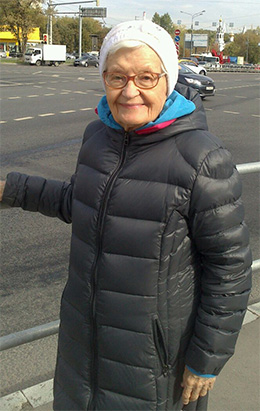
Tatyana's parents. Back in 1996, Tatyana’s mother was already bedridden for a few years with congestive heart failure and had a couple of heart attacks. She was also suffering from gallbladder stones and cataracts, but because of her heart condition and related medication, she couldn’t get a clearance for either surgery.
Following my recommendations on her diet and lifestyle, she fully recovered after a few years and was successfully operated on for cataracts and gallbladder stones. She was medication-free and fully intact mentally and physically until the last month of her long life. The photo on the left was taken on October 1, 2018, a year before her death at 96 in November of 2019.
Seeing his wife's full recovery from congestive heart failure, a previously skeptical Tatyana’s dad started taking supplements a few years later. Shortly after that, he was diagnosed with late-stage colon cancer and was operated in 2005. After the surgery, he was too weak to have chemotherapy and was given less than a year to live. Tatyana and I took a very active role in his post-surgical care and he passed away seven years later, in November of 2012, at 88. He was medication-free and independent until the last three months of his life.
My extended family. Two of my aunts on the mother's side dropped their skepticism after their own brushes with death.
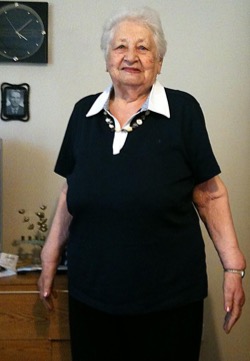
Aunt Rachel has been severely obese since her early thirties. Despite considerable hardships (Leningrad's blockade during WW2, the loss of the child, early death of her husband), she was one of the most positive and kind people I have ever met.
She started taking supplements after a heart attack in 2004 and passed away in 2018 at 98. She was self-sufficient until the last year of her life. I didn't attempt to modify her diet because it was already reasonable for her age.
The photo on the left was taken in June 2015, right before to her 95th birthday party.
My other aunt, Sima, started taking supplements after lung cancer surgery in 2002. She passed away in 2018 at 94 from a cancer relapse a few months earlier. She was fully intact physically and mentally until her death. Unfortunately, I don't have her photos from that period.
In all four cases, living to that age after surviving congestive heart failure as Tatyana's mother did, late-stage colon cancer as her dad did, or heart attack and lung cancer, as my aunts have done, are highly unlikely. Even less likely — all four didn’t have dementia, immobility, diabetes, and side effects of numerous drugs related to those conditions because they weren’t taking any.
If you, too, decide to live a life worth living, consider taking a similar approach, and not just for the sake of your appearance:
You may spare yourself from diabetes, heart disease, stroke, and kidney and liver failure, the primary killers of Americans of all ages.
You may reduce or eliminate the risks of neurological disorders such as dementia, Parkinson’s, and Alzheimer’s.
You may significantly reduce your risk of developing non-genetic cancers.
You are less likely to become a victim of a fall or car accident caused by diminished eyesight, poor coordination, or both.
You will not be exposed to medical risks and medication side effects that cut short over a million lives each year.
You will save a ton of money related to medical expenses not covered by medical insurance and loss of income while sick or disabled. Over a million Americans file annually for bankruptcy related to runaway medical costs despite having medical insurance.
You will extend your career and earning power well past retirement age. Tatyana and I are still working full-time managing GutSense.org and a software development company I co-founded in 2017 [link].
You will enjoy a higher quality of life for a lot longer. What’s the point of longevity if it is spent in pain, diapers, or a wheelchair?
I hope my family's and my own example will inspire you to study the rest of this site, read my books, optimize your diet, and start your journey toward exceptional health and longevity! And as far as good luck goes, the harder you work, the luckier you get!
Please note that my family outcomes do not necessarily prove that my methods will be effective in all cases but are presented here to illustrate that when the same principles are applied to different individuals, they yield similar results.
Why am I more focused on a career rather than just health?
For starters, your career IS a function of your health. Second, and even more critical, the advent of artificial intelligence will significantly impact everyone’s career and income over the next few years.
I have first-hand knowledge of this subject well because I started using ChatGPT, Gemini, Claude, Perplexity, Midjourney, and many others since their inception. In the process, I learned that AI turns below-average employees into above-average and the ones who are already above-average — into amazing. Paradoxically, individuals who are already amazing will become much less so because AI is a great equalizer.
In an era when almost everyone becomes above average or amazing, productivity will increase exponentially, and tens of millions of high-paying professional jobs will be eliminated. The primary deciding reasons for terminating one good employee versus another would no longer be their baseline performance but their energy, stamina, attitude, mastery of details (memory and focus), and appearance.
These five factors are a function of good health rather than skills, regardless of age or experience. It’s even more so for anyone past 50 because high energy, sustained stamina, positive attitude, exceptional memory, sharp focus, and youthful appearance aren’t possible when taking one or more prescriptions for hypertension, heart disease, diabetes, weight loss, depression, anxiety, insomnia, pain management, or any other chronic conditions associated with demanding professional occupations.
The highly selective and recession-proof technology firms, including Apple, Google, Microsoft, and Amazon, laid off 262,242 employees in 2023 alone, mainly because of AI. Imagine what’s coming over the next decade to other less efficient industries, such as law, accounting, banking, consulting, healthcare, media, entertainment, etc.
Regardless of all other factors, your goals here aren’t to stop biological aging per se but to prevent the typical side effects of premature aging, such as diabetes, obesity, hypertension, digestive disorders, bone disease, chronic pain, insomnia, low energy, memory loss, and many others.
So I hope the information on my site and in my books will help you remain relevant and desirable in the workplace today, tomorrow, and for years to come.
A note of caution for the skeptics and doubters
The focus of my work isn’t on healthcare but on wellness. Let's review the differences between these two approaches when it comes to dealing with type 2 diabetes:
The wellness care approach is focused on eliminating all sources of metabolic disruptors, such as excessive carbohydrates, alcohol, and anything that tastes sweet, including artificial sweeteners.
The expected outcomes are full recovery from type 2 diabetes, sustained weight loss, zero drugs, zero side effects, zero cost, good quality of life, and extended lifespan.
The healthcare approach relies on prescription drugs, lab tests, daily glucose checks, and a high-carbohydrate diet to counterbalance medication-induced hypoglycemia.
The most common outcomes for patients are fatty liver, heart attacks, strokes, kidney failure, limb amputations, and up to 10-year reduction of life expectancy.
Diabetes-related amputations are far more common than you may think — around 154,000 occur annually in the United States alone, with one happening every 30 seconds. That's over three million amputees in the last twenty years alone. Wrap your head around it.
All that said, whenever my family or I need a doctor, we approach them respectfully and without bias. I don’t highlight my background, challenge their qualifications, or argue with their recommendations. This approach has served us well, and in return, we’ve consistently received excellent and respectful care.
That doesn’t mean I agree with everything they do, blindly follow their recommendations, or skip due diligence when selecting a doctor. I do all of that but never in a confrontational way because doctors' skills in their respective fields are superior to mine, or, in many cases, I may not have any.
If you want to prove me wrong, get to my age in the same or better shape first!
